Matador Network's Blog, page 167
May 20, 2024
Paradisus by Meliá Is Injecting Culture and Fine Dining Into Their All-Inclusive Resort in Gran Canaria

This was my first time visiting the Canary Islands. The archipelago off the coast of northwestern Africa is part of Spain and has long been a popular destination for Europeans looking for sunshine in Spring. The volcanic islands, which include Tenerife, Fuerteventura, Lanzarote, and Gran Canaria, have garnered the lazy reputation of being a place to flop and drop rather than explore. Although that’s not entirely fabricated, there are places and resorts that are shrugging off that reputation and working extremely hard to offer visitors a more immersive and cultural experience of the Canaries. One such property is the Paradisus by Meliá on Gran Canaria.
Local touches are present throughout the hotel. Paradisus, as a brand, champions the culture of each hotel’s destination. Nods to the Canary Islands can be seen in the food and drink offerings, resort-led excursions, on-site activities, hotel decor, and art exhibits that flow through the resort’s main building. Handmade woven light shades compliment carved wooden picture frames, and mini bars are stocked with rum from Gran Canaria, banana chips, and chocolate bars from the island.
The resort flows down to the beach with immaculately maintained gardens. Photo: Melia
Photo: Melia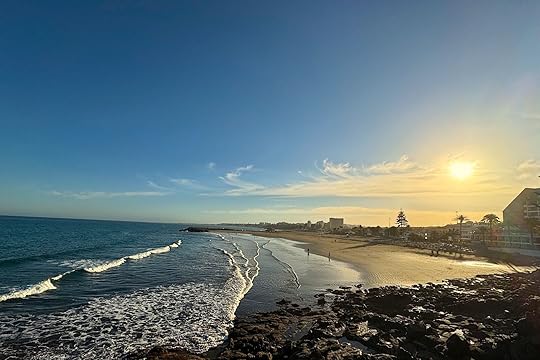 Playa de San Agustin at the foot of the resort on the quiet south coast. Photo: James Gavin
Playa de San Agustin at the foot of the resort on the quiet south coast. Photo: James Gavin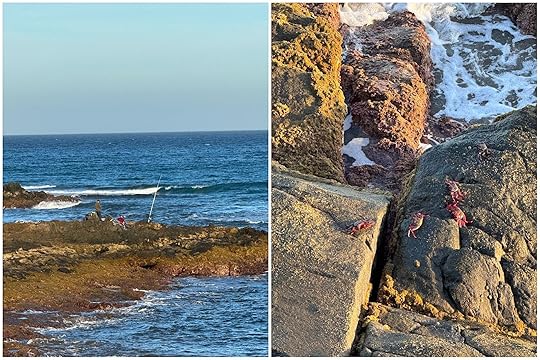 Fisherman on the rocks and red rock crabs, a species native to tropical eastern Atlantic coasts, including Ascension Island, West Africa, and the Canary Islands. Photo: James Gavin
Fisherman on the rocks and red rock crabs, a species native to tropical eastern Atlantic coasts, including Ascension Island, West Africa, and the Canary Islands. Photo: James GavinThe expansive five-star resort is set on the south coast of Gran Canaria, on the Playa de San Agustín beach, just 20 minutes from the international airport. The resort can organize transfers, which, depending on the package you opt for, can be included in your all-inclusive fee.

The gardens and grounds are beautifully maintained.
Photo: James Gavin
Sprawling over impeccably kept grounds dotted with towering palm trees filled with parakeets, the resort’s grass areas, the indoor-outdoor spa with open air massage beds, restaurants, swimming pools, and accommodations are connected by winding paths.

The outdoor massage beds are surrounded by swaying palms. An overhead canopy and curtains provide privacy.
Photo: Katie Scott Aiton
Playa de San Agustín, a relaxing and quieter alternative to the busier Playa del Inglés nearby, is accessible for guests by a secure gate at the bottom of the ocean-fronted resort.
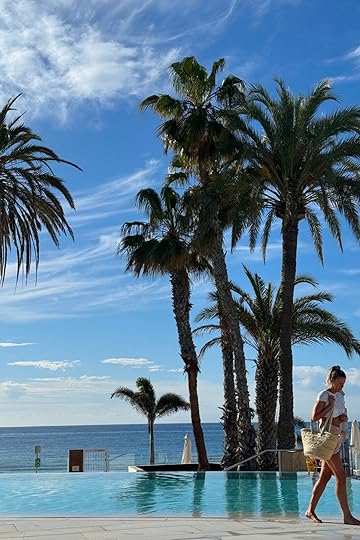
The main swimming pool.
Photo: James Gavin
 The Reserve area swimming pool is adults only. Photo: James Gavin
The Reserve area swimming pool is adults only. Photo: James Gavin We enjoyed our breakfast in The Reserve area. Photo: Melia
We enjoyed our breakfast in The Reserve area. Photo: MeliaI stayed at the resort as a Reserve guest, an upgrade you can opt for to elevate your all-inclusive experience. It caters specifically to adults, with access to the Reserve area, which includes private check-in, a daytime bar and snack area, a plush lounge space, an adults-only pool (with bar service), a private breakfast dining space, and a 90-minute spa visit.
 The Reserve Premium Room Ocean Front. Photo: Melia
The Reserve Premium Room Ocean Front. Photo: Melia Outdoor sitting area of the suite. Photo: Melia
Outdoor sitting area of the suite. Photo: Melia Photo: Melia
Photo: MeliaIt also grants you access to a selection of premium suites, with beautiful views over the garden and ocean, upgraded amenities such as balconies with hot tubs, and suites with patios and private cabanas. Rooms have a calming ambiance with a natural color pallet and use of soft natural materials. Our bathroom was glass-fronted (with a privacy curtain), so you could enjoy a soak in the bathtub with a view of the ocean in the distance. Luxury lemongrass-scented toiletries by Australian brand Biology are a lovely touch.
You can enjoy excursions and activities designed to connect you with the island’s culture, history, and natural beauty.Paradisus offers a twist on the traditional all-inclusive resort experience. As a Meliá Destination property, it goes beyond simply providing unlimited food and drinks. The resort offers a curated selection of excursions and activities designed to connect guests with the island’s culture, history, and natural beauty.
The resort is amenity and activity-rich, with something to do at seemingly every turn. The weekly entertainment schedule is jam-packed. Wellness and mindful offerings such as yin yoga, Pilates, and meditation are held in the garden in the shade of palms, aqua aerobics invites a mixed crowd of old and young to the main pool area, and watercolor painting, candle making, aloe workshops, and wine and cheese tasting in the resort’s winery introduce guests to the culture of Gran Canaria.
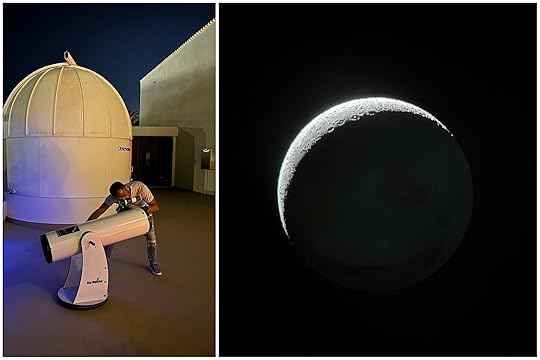
One of the highlights was the stargazing activity. Tickets for viewing are available on the event night from 9:00 PM. Luckily, we had a clear sky and were able to see the moon and many constellations through the telescope.
Photo: James Gavin
Kids are also well catered for. The Kidsdom schedule included three morning activities, two in the afternoon and one in the evening. The splash pad comes to life, there was a mini chef competition, educational workshops in the garden, an outdoor cinema, a pajama party, and a mini-disco.
On-site staff play a crucial role in facilitating these experiences. With the Reserve package, you’ll be introduced to your Destination Concierge upon arrival. They are local experts who can recommend excursions and create a personalized itinerary. This ensures you get the most out of your vacation to Gran Canaria; venturing beyond the resort walls, you’ll make meaningful connections with the island’s culture and people.
You can add as many excursions as you’d like to your stay. You can venture to Las Palmas to visit the Museum of Gran Canaria, spend the morning at a traditional Canarian rum distillery, where you’ll learn about the process of transforming locally grown sugarcane into the island’s iconic rum, or take a one-hour drive to Roque Nublo Natural Park and hike through the volcanic landscape to Roque Nublo, which gifts you breathtaking panoramic views of the island.
 Photo: James Gavin
Photo: James Gavin Photo: James Gavin
Photo: James Gavin Photo: James Gavin
Photo: James GavinWe toured a local working banana plantation, where we joined a knowledgeable guide who explained the lifecycle of banana plants, from cultivation to harvesting. The plantation is located in the north of the island, which has a dramatically different verdant topography compared to the south. The walking tour took us through rows of towering banana plants, where we learned about the different banana varieties grown in Gran Canaria and the sustainable practices passed down through generations. We finished our morning sampling some of the delicious banana products, from liqueur to marmalade.
Paradisus is successfully running a luxury all-inclusive.Food is where they could have faltered. But I was very pleasantly surprised. The quality of the products are to the highest standard. Menus are creative and varied, with dishes celebrating Canary Island food culture (as well as having a multitude of international options.)
“We want to give our guests the opportunity to experience the culture of Gran Canaria through the food we serve,” says the resort’s food and beverage manager, Raul Garate. Garate hails from Santander in the north of Spain and spoke to me about the passion the brand and team at Paradisus have for championing Gran Canaria.
 Lemon Fish restaurant specializes in ceviche. As the sun went down, we enjoyed live music and sea bass with fiery chili and jalapeno pepper dressing. Photo: James Gavin
Lemon Fish restaurant specializes in ceviche. As the sun went down, we enjoyed live music and sea bass with fiery chili and jalapeno pepper dressing. Photo: James Gavin Lemon Fish as the sun sets. Photo: Melia
Lemon Fish as the sun sets. Photo: MeliaThere are eight restaurants peppered across the resort: Gastro Hall (the main dining area with a buffet), Ginger (the 24-hour bar and small-menu eatery), Vibra (the sports bar with a light bites menu), MasCalzone (the Italian trattoria-style restaurant), Peseta (with a tasting menu designed by Michelin-star chef Germán Ortega from Las Palmas in Gran Canaria), Kanna (the Mediterranean restaurant), Lemon Fish (the Peruvian kitchen where ceviche is a must), and The Shack (the relaxed pool bar).

MasCalzone is Paradisus’ Italian restaurant. We enjoyed bruschetta with cherry tomatoes, stracciatella cheese, and anchovies, followed by a wood-fired pizza.
Photo: James Gavin
You can spend your entire vacation eating and drinking extremely well at Paradisus without spending anything extra. The options are endless; the house wines are local and delicious, and there’s a huge selection of cocktails and spirits. That said, at each restaurant, there’s an opportunity to upgrade your experience, whether that’s through the wine list (which leans heavily on bottles from the Canaries and Europe) or elevated sides such as jamón ibérico and lobster and fine-cut steak plates.
The Reserve package allows you to have breakfast in the VIP area. The a la carte menu offers a more formal setting than the morning buffet in the Gastro Hall. Spanish tortillas are a must here, as is the pancake stack with fresh redcurrants, cream, and chocolate.
I also enjoyed the Mediterranean restaurant Kanna. It’s situated on the lower pool level. The interior tables spill out through the open glass walls onto the patio and a cool breeze flows throughout (which is welcome if dining in the afternoon). I ordered well here. Plates of grilled and fried calamari and prawns with volcanic salt coupled with Mojo Roco sauce (a favorite dipping salsa in the Canaries of red peppers, garlic, and cumin) and homemade aioli became my mid-day go-to.

Tasting menu at Peseta.
Photo: Katie Scott Aiton
Michelin-star chef Germán Ortega is an advisor of the fine-dining restaurant Peseta. Each ingredient from the dishes originates within 60 miles of the resort. We had the choice of three menus of three courses (plant-based, fish, or meat) with a starter of homemade bread, whipped avocado butter with mint oil and alyssum flowers, olives from the south-eastern part of the island, and raw tuna cones with crunchy pea shoots. I opted for the Earth menu, starting with confit tomatoes from the garden with yogurt, followed by truffle and mushroom risotto and almond ice cream. In the future, Paradisus has plans to work with Ortega to design dishes for the other on-site restaurants. 
May 19, 2024
The First Michelin Mexico Guide Is Out (and They’re Not All Expensive)

Fun fact: did you know the world-famous Michelin dining guides were created to sell tires?
It’s true — and that’s why it’s called the “Michelin” guide, as the Michelin tire company started rating restaurants to encourage people to drive more, and thus need to replace their tires more often. But now, the Michelin dining guides recognize the best restaurants and chefs in the world, and are available for 25 different counties, as well as select cities like New York City and Chicago, IL.
The downside of Michelin restaurants is that they’re usually pretty expensive, since they’re considered the best in the world. Inexpensive Michelin restaurants are becoming more common, but are still very much in the minority. And that’s what makes the newest Michelin Guide to Mexico so exciting. It’s the first time Michelin has ever done a guide to Mexico, and it covers 18 restaurants. It was released on May 14, and two restaurants got two stars each, with the other 16 receiving one illustrious star.

Photo: Velas Resorts Mexico/
The full list is below, but one restaurant getting extra attention is Taquería El Califa de León, a tiny taco stand in Mexico City that’s been around for roughly 50 years. It’s the only taqueria to be included in the Michelin Guide to Mexico, and has no website or online presence. In fact, it barely has much of a menu: just a few simple beef tacos. But they’re cheap, delicious, and now, among the best in the entire country. The head chef told multiple sources, including the Associated Press, that the secret to its success is the simple menu, adding just a fresh tortilla and a few different sauces to the meat.
It’s cash only, and fairly affordable by US standards (though a bit pricey for a taqueria): a basic beef taco will set you back 53 pesos, or about $3. The authors of the Michelin Guide to Mexico clearly like cheap eats, as they didn’t hold back when singing the taqueria’s praises.
“…the Gaonera taco, is exceptional,” they wrote. “Thinly sliced beef filet is expertly cooked to order, seasoned with only salt and a squeeze of lime. At the same time, a second cook prepares the excellent corn tortillas alongside. The resulting combination is elemental and pure.”
Where to find the restaurants in the Michelin Guide to MexicoHere’s the full list of awarded restaurants. All received one star, except for Pujol and Quintonil, which were each award two. Interestingly, several of the restaurants below are inside larger, all-inclusive resorts, bucking the idea that corporate hotels don’t put a focus on quality food. That includes two inside the Grand Vegas Resorts, as well as HA and Le Chique. While Taquería El Califa de León is the least expensive restaurant on the list, four other restaurants are rated with two dollar signs ($$), putting them in the category of $25-$50 per person for a meal.
In addition to the 18 restaurants below, another 42 received a Bib Gourmand designation, acknowledging a high quality of food and drink at a price range slightly more accessible to the average traveler.
Pujol, Mexico City (two stars)Quintonil, Mexico City (two stars)Animalón, Valle de GuadaloupeCocina de Autor Los Cabos, Los Cabos (Inside Grand Velas Los Cabos)Cocina de Autor Riviera Maya, Playa del Carmen (Inside Grand Velas Riviera Maya)Em, Mexico CityHA, Playa del Carmen: (Inside Hotel Xcaret)KOLI Cocina de Origen, MonterreyLe Chique, Cancun (Inside Azul Beach Resort)Pangea, MonterreyDamiana, Ensenada Los Danzantes Oaxaca, OaxacaConchas de Piedra, Valle de GuadaloupeRosetta, Mexico CitySud 777, Mexico CityTaquería El Califa de León, Mexico CityLevadura de Olla Restaurante, OaxacaEsquina Común, Mexico City (with no fixed location) More like thisRestaurants + BarsThe Best US Restaurants of 2024, According to the 'Oscars of Food'
More like thisRestaurants + BarsThe Best US Restaurants of 2024, According to the 'Oscars of Food'
May 17, 2024
These Hiking Boots Give You Powerful Ankle Support When You Need It Most
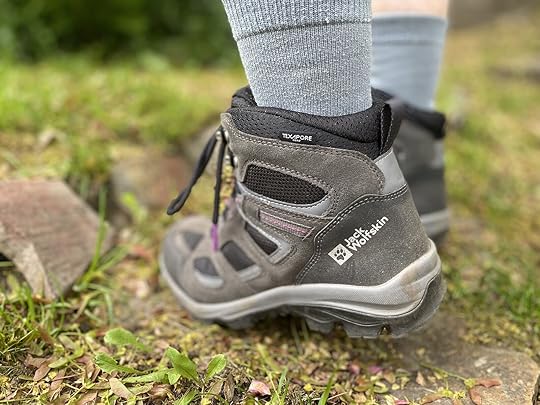
We hope you love the products we recommend! Just so you know, Matador may collect a small commission from the links on this page if you decide to make a purchase. Listed prices are accurate as of the time of publication.
Living in rural British Columbia, Canada, there are two types of equipment you absolutely need to enjoy yourself in the outdoors year-round: snow gear and hiking gear. If you fill both needs in one product, you’re golden. It saves you money, space in your closet, and by purchasing fewer items you get to keep your carbon footprint low. For example, if the shell you use for skiing is light enough to fend off the spring showers when on the trails, you’re set. The same goes for boots. If the shoes you use to hike during shoulder season and the summer work well enough to walk in the snow in the winter, you’ve scored.
I walk between three to six miles every day throughout the year, no matter the weather. Sometimes that means hitting the nearby trails and sometimes it means walking the quiet streets of my small town. For around five months out of the year, I walk in snow, or on ice, or both — a deadly combo if you don’t have the right footwear. Luckily, I have found the best shoes for my all-season routine: Jack Wolfskin’s Vojo 3 Texapore Mid W.
The Jack Wolfskin’s Vojo 3 Texapore Mid W are waterproof and have great traction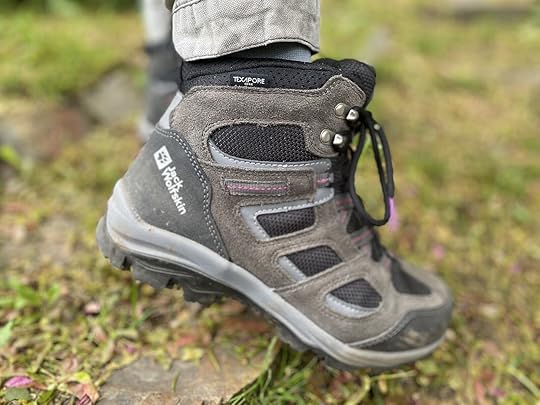 Photo: Morgane Croissant
Photo: Morgane Croissant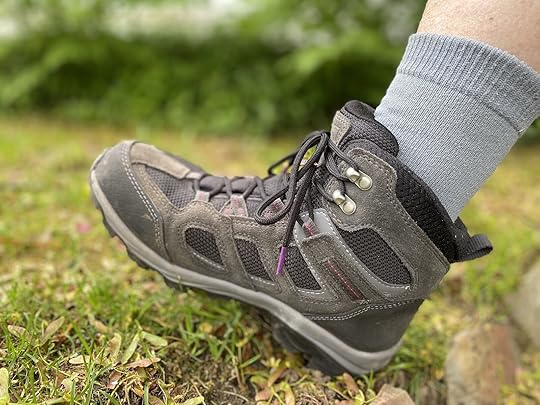 Too bad the color palette for these boots is so dull. Photo: Morgane Croissant
Too bad the color palette for these boots is so dull. Photo: Morgane Croissant Photo: Morgane Croissant
Photo: Morgane CroissantGone are the days when I’d have a pair boots with supposedly “polar traction” or “snow traction” for winter, as well as a pair of hiking boots for the rest of the year. There’s no need for that at all. The reality is that, no matter what brands advertise, you can’t fight the slipperiness of snow and ice with your outsoles only. You need a traction device that you add to your shoes. My personal favorite, which I have been using for years with great success (no fall, no broken bones), is the IceTrekkers Diamond Grip.
The Jack Wolfskin’s Vojo 3 Texapore Mid W hiking boots have very good traction but, like any other shoes or hiking boots on the market, they won’t protect you 100 percent when the streets are pure ice sheets unless you have cleats. What they do, however, is keep you dry, even while walking in the snow or pouring rain. When the weather is much better, they also keep you safe on trails, whether the terrain is smooth or rocky, dry or wet, thanks to their high-traction outsoles.
Those with a better sense of fashion than me might turn up their nose at the idea of wearing hiking boots throughout the winter but, if I had to choose between being stylish and safe while on my daily walk, I’d go for safe every single time. Remember: Crutches aren’t really classy either. Also, while more fashionable shoes like Blundstones are solid, all-weather boots, walking with them in the snow and salt all winter will damage their beautiful leather exterior. Hiking boots are built to take on anything, and Jack Wolfskin’s Vojo 3 Texapore Mid W are no exception.
The ankle support on the Jack Wolfskin’s Vojo 3 Texapore Mid W is as sturdy as it getsI thought my former pair of hiking boots, On’s Cloudtrax, were the perfect footwear for me, until I started wearing my Jack Wolfskin’s Vojo 3 Texapore Mid W.
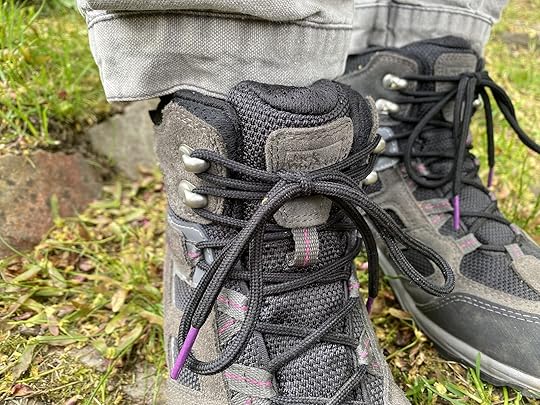 The metal hooks allow for a tighter fit with the laces and a more secure feeling. Photo: Morgane
The metal hooks allow for a tighter fit with the laces and a more secure feeling. Photo: Morgane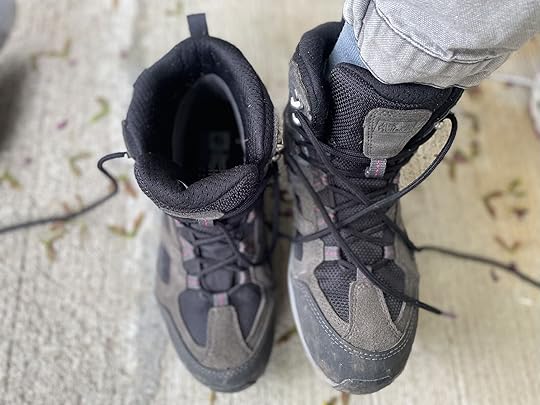 The cushioning around the ankle makes these hiking boots very cozy. Photo: Morgane Croissant
The cushioning around the ankle makes these hiking boots very cozy. Photo: Morgane CroissantSince I fractured my right ankle at age 13, I’ve always felt extremely aware of its fragility. It’s never healed exactly right and, for the past 25, has never felt very robust. Having high-top hiking boots allows me to feel a lot safer on uneven terrain. The Vojo 3 Texapore Mid W boots keep my ankles very snug thanks to the tight padding, and the metal hooks at the top let me get the laces very tight, securing myself even further.
While I initially thought I preferred the Cloudtrax drawstring laces for their ease of use, I’m now fully on board with taking the time to firmly lace up to feel more stable.
Just six days ago, I badly sprained my right ankle again. I was walking around town in a pair of sneakers because it was 78 degrees outside and I did not feel the need to wear my boots. Now I wish I had opted for the less practical option. After spending four hours at the ER, the doctor’s orders were for me to wear shoes with good ankle support for as long as I feel necessary, so I’m wearing my Jack Wolfskin boots, no matter the temperature, and it feels like a relief to be solidly encased in my hiking boots rather than have my ankle flopping around whichever way.
What the Jack Wolfskin hiking boots could do betterThe thick cushioning throughout and the sturdy outsoles are what makes those hiking boots so comfortable, solid, and durable, but it’s also what makes them a little heavy. At 29.6 oz, these hiking boots can feel a little cumbersome at first, especially when compared to On’s Cloudtrax that weigh just 12.87 oz.
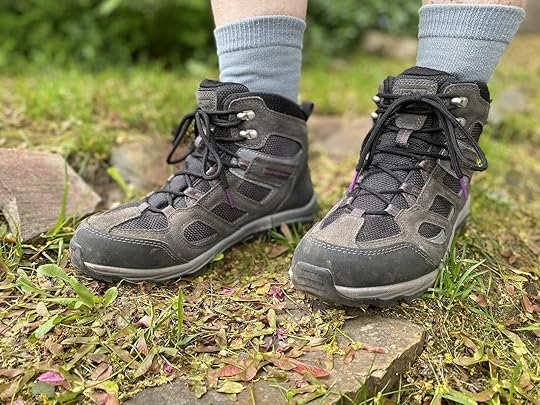
Photo: Morgane Croisasnt
While I’m a big advocate of function over form, especially when it comes to outdoor gear, it would not go amiss to give the Jack Wolfskin hiking boots some pizazz. The choice of colors is limited to a selection of five cheerless hues that are very dull. I chose the steel gray model with purple stitching and every time I look at them I think it’s the best, yet most boring pair of shoes I own. I’m of the opinion that adding some bright and vidid colors would make the brand more recognizable, and the boots more fun to wear. 
These Comfortable, Discrete Earplugs Turn the Noise Down on Loudest Parts of Traveling

Flights are the ultimate test of what people can handle when it comes to tight, crowded public spaces. Reclined seats, shoeless passengers, and an over-talkative row of new companions all stand in the way of relaxation. But getting some comfortable quiet (if not the full peace and quiet) is as easy as popping in some CURVD Everyday Earplugs.
Full disclosure: I am not typically an earplugs fan. I would typically rather live through the noise while traveling — be that a loud jet engine drone or all-too-clear music seeping through hotel walls — than squeeze some bright orange foam into my ears. Added to that, I have small ears that force cheap disposable earplugs to slowly, and then quickly, pop out. I’m also vain. The case against normal earplugs is clear on that point.
Complete noise cancellation is another thing I’ve never been all that interested in. It’s always better to be aware of your surroundings when traveling — for hearing passing cars, sirens, something calling your name over a loudspeaker because you’re close to missing your flight, etc. The Everyday Earplugs soften, not silence. The general din of modern life is moved to the background with CURVD, and sharp loud noises are made less sharp.
The brand has studies showing up to a 30 decibel sound drop (taking the noise level of standing next to a whirring washing machine down to a humming refrigerator, for example). Third-party, EPA-certified tests show a noise reduction rating (NRR) of 15 decibels and a single number rating (SNR) of 28 decibels. These are built for the casual user not for gun ranges or manufacturing sites though, and there’s a good chance those decibel numbers don’t mean much to the casual user just looking to dim the noise. Practically speaking, the sound reduction is enough to make a big concert seem like you’re in a more intimate setting or turn the noise level of a loud coffeeshop closer to the sound in a library during story time.
When it comes to fit, four tip sizes match the smallest to largest ears. The shape matches the brand name, and does its job well of holding in a comfortable position. They twist to neutral, upper, and lower positions to fit the shape of your outer ear cartilage, and stay in and comfortable even for long periods of activity (or just turning heads on a travel pillow).
View this post on InstagramA post shared by CURVD Earplugs (@curvdearplugs)
They’re also built for reuse: there’s no plastic in the construction, and the silicone is washable. The packaging skips plastic as well, and the small case is aluminum. The add-on carrying case is silicone as well — and a must-have addition for travelers prone to losing the little things unless they’re clipped to a bag.
On a recent flight to LA from Denver, I popped these in and got some escape on the quick, but oversold, flight. They came even more in handy when it became clear just how thin the walls of my room at the Westin Bonaventure were. As insightful as the late-night family therapy calls going on over speakerphone in the next room over, it was a time much better spent with the noise muted through some earplugs.
Working at a travel publication, travel is almost always just as much about work for me as it is about seeing the world. That means remote working in some pretty loud places. CURVD earplugs make it easier to focus in hotel lobbies, coffeeshops, and small noisy nooks.
It’s easy to forget how much unwanted noises can negatively impact the travel experience. That is, until you’re inevitably faced with unwanted noise the again the next time you venture out. For about $30 for the earplugs and travel case together, these CURVD earplugs have earned a place clipped onto my go-bag forever more so I’m always ready for when that time comes. 
Seasoned Nevada Travelers Know How to Get A Little Out There. Now You Can, Too.
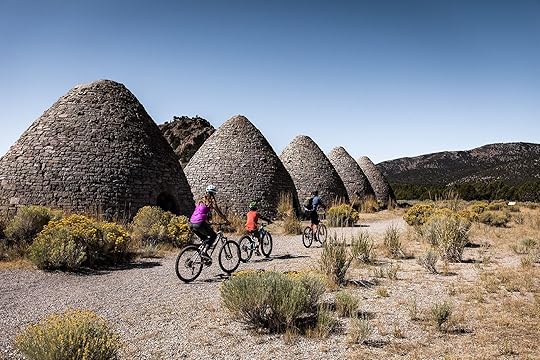 Seasoned Nevada Travelers Know How to Get A Little Out There. Now You Can, Too.Text: Robert Kachelriess | Photo: Travel Nevada
Seasoned Nevada Travelers Know How to Get A Little Out There. Now You Can, Too.Text: Robert Kachelriess | Photo: Travel NevadaNevada is full of fascinating settings for wide-open moments of wonder. While Las Vegas and Reno command most of the attention, other enchanting corners of this vast and diverse state hold plenty to appreciate, from the great outdoors to wonderfully weird surprises. In fact, Nevada is the seventh largest state by area, with more than 110,000 square miles to explore. So get ready to dive in and get a little out there on your way to discovering some of the memorable adventures that define the Nevada experience.
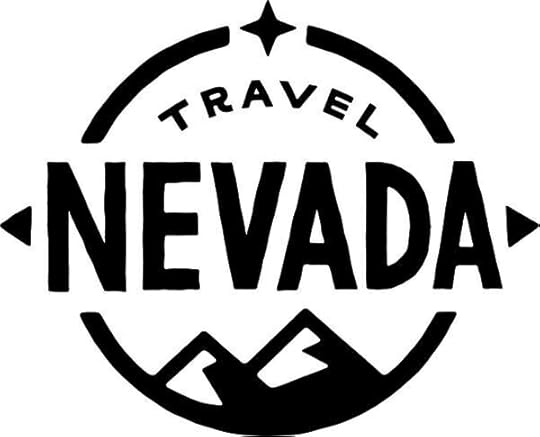
This post is proudly produced in partnership with Travel Nevada.
Ditch the cities for Nevada’s wide-open spaces Ward Charcoal Ovens State Historic Park Big Bend of the Colorado State Recreation Area Mormon Station Historic State Park Big Bend of the Colorado
Laughlin, a casino town on the banks of the Colorado River at Nevada’s southern tip, is a place where vacationers can enjoy gaming and big-name entertainment without the crowds. It’s also an engaging destination for those who appreciate the outdoors. Big Bend of the Colorado State Recreation Area, just outside of town, is a day at the beach and so much more, with clear waters for boating, kayaking, swimming, and soaking in the rays of the bright Nevada sun.
Cathedral Gorge State ParkCathedral Gorge State Park is a stunning display of rock formations that’s incredibly easy for visitors to navigate. Take the south entrance and pass by a series of slot canyons (aka moon caves) and towering stone monoliths with a choice of hiking areas at your leisure. You’ll even spot a stone water tower built in the 1930s by the Civilian Conservation Corps. The north entrance, meanwhile, provides access to a valley of hoodoos.
Great Basin National ParkConnect with nature and get a little out there at one of the least-visited national parks in the US. Located just outside Ely, Great Basin National Park holds some of the most rewarding hikes in Nevada. Soak in the majesty of Wheeler Peak, the second-tallest mountain in the state, and explore the terrain dotted with alpine lakes and bristlecone pines — among the oldest trees on the planet. Go underground and tour the Lehman caves, featuring a staggering collection of stalactites and stalagmites, and hang around after dark for some of the best stargazing anywhere.
Kershaw-Ryan State ParkKershaw-Ryan State Park is a sweet spot for nature lovers, where grass-filled, tree-lined pockets contrast sharply with reddish-brown canyon walls. The park sees plenty of rock climbers and mountain bikers, but the hiking here is next level as well, with moderate trails leading to sweeping overlooks. Kershaw-Ryan is about a two-hour drive north from Las Vegas and located near Caliente, a small town with a rich heritage as a historic train depot.
Lake TahoeDespite the short drive out of Reno, Lake Tahoe feels a world away from northern Nevada’s most populous city. The largest alpine lake in North America can easily fill an entire trip itinerary with boating, kayaking, and sunset cruises, along with hiking, skiing, and scenic drives. It’s one of those rare places where you can experience snow and sand on the same day. Along the way, have fun pedaling the bike paths of Incline Village, taking quirky photos at spots like Bonsai Rock, and exploring historic sites such as Thunderbird Lodge.
Mormon Station State Historic ParkIn 1851, Genoa was the first non-native settlement in what would become the Nevada territory, occupying a unique place in history. The small town is an intimate community of homes, shops, and restaurants with Mormon Station State Historic Park in the center of it all, offering a glimpse into the past. The grounds mark the location of a pioneer trading post, much of it recreated after a fire destroyed a few of the structures in 1910. Today, it’s a charming spot for a stroll or picnic with lush grass, trees, and log cabins.
Mt. CharlestonLas Vegas is known for its desert environment, but it’s less than an hour’s drive from Mt. Charleston. The tallest mountain in Clark County is home to a vibrant, pine-filled environment — with the slopes of Lee Canyon Ski & Snowboard Resort available to those who crave the rush of winter sports. Return to the peak after the snow melts for hiking, mountain biking, Frisbee competitions, and archery. Either way, you’ll get fresh alpine air and temperatures cooler than those in the Las Vegas Valley.
Ward Charcoal Ovens State Historic ParkWard Charcoal Ovens State Historic Park is the perfect mix of nature and history in the Egan Mountain Range outside Ely. The park is named for six beehive-shaped charcoal ovens used to help process silver in the late 1800s. According to legend, they also served as hideouts for bandits on the run from the law during the Wild West era. Beyond this heritage, the park is a rewarding destination for hiking, biking, camping, and spotting wildlife such as deer and elk.
Photo credits: Ward Charcoal Ovens Hero by Irina K/Shutterstock. All other photos in this section by Travel Nevada.Explore uncommon Nevada culture stops Virginia City Pioche Goldwell Open Air Museum Austin
Austin is roughly Nevada’s midpoint on US Route 50, infamously described as the “Loneliest Road in America” by Life magazine. The small mining town is worth a visit to see the vintage Gothic architecture of St. George’s Episcopal Church and the ruins of Stokes Castle. Mingle with the locals at Grandma’s Restaurant and Bar, and appreciate the stillness of nature in the Reese River Valley.
Delamar Ghost TownNevada has more ghost towns than any other state, but Delamar is among the most fascinating. The old mining town built a reputation as the “widowmaker” due to excavation dust that was fatally inhaled by workers, setting off a wave of deaths in the 1890s. Today, an ominous (metaphorical) cloud hangs over the abandoned mountain community, now empty save for an impressive number of crumbling buildings and other ruins left over from its heyday.
ElkoThe largest city in northeast Nevada is rather quaint — a place that keeps to itself with a small-town, family-focused sensibility. Elko is also a great place to explore the legacy of Basque culture in the region. Enjoy a meat-heavy multi-course meal at the former boarding house known as the Star Hotel & Bar, pintxos (Basque small bites) at Ogi Deli, exhibits at the Northeastern Nevada Museum, and the annual National Basque Festival, which takes place every summer.
ElyEly is a splash of civilization in the middle of Nevada’s remote eastern corridor. Yet it feels like a relic of a different era, with timeless Old West Victorian architecture and an unwavering cowboy spirit. The town is most closely identified with the Hotel Nevada, which was the tallest hotel in the state when it was built during Prohibition. For more history, check out the Nevada Northern Railway Museum and East Ely Railroad Depot Museum, a fully operational depot that dates back to 1906. Guests are welcome to hop aboard for vintage locomotive rides to the outskirts of town.
PiocheWhen you’re visiting the aforementioned Cathedral Gorge State Park, make a point to stop by Pioche, about 10 miles north. This Old West mining hub has its share of historic sites, from Thompson’s Opera House to the Million Dollar Courthouse. But Boot Hill Cemetery might be the most unique spot. Pioche’s remote location probably contributed to its restless character in the early days, when saloon shootouts were common — none of the first 72 people to die here did so of natural causes. As a result, these days the entire town is believed to be haunted.
Rhyolite Ghost TownRhyolite is one of the most distinctive and most photographed ghost towns in Nevada. Located on the edge of Death Valley, it was once a population hub fueled by a mining boom in the late 1800s, a rare Old West community with street lights and a stock exchange among its thriving businesses. The town went bust, however, and today the remnants of a handful of tall buildings are visible along with the elaborate train depot. Tom Kelly’s Bottle House, built from glass bottles, is nearby, as is a series of quirky art installations known as the Goldwell Open Air Museum. And minutes away you’ll find Beatty, a small community where burros roam the streets — the animals provided the naming inspiration for the Happy Burro, a tavern famous for its award-winning chili.
Virginia CityVirginia City is a Wild West community frozen in time less than 30 miles southeast of Reno. It hasn’t changed much since the silver rush of the Comstock Lode in 1859, which makes it one of Nevada’s best examples of historic preservation — despite the gift shops on every corner. Walk the boardwalks that line the streets and visit authentic Old West saloons, museums, and historic sites, including Piper’s Opera House and the Historic Fourth Ward School Museum. Hear about Virginia City’s darker side on a ghost tour, or ride the Virginia & Truckee Railroad, which once transported the gold and silver mined near this Silver State city. 

This post is proudly produced in partnership with Travel Nevada.
May 16, 2024
This Beach Town Just Introduced a Mini-Golf Trail With 30+ Courses

For destinations around the US that have a lot of a similar type of business, it’s not unusual to find marketing campaigns that group them together into so-called “trails.” For example, California’s De Portola Wine Trail or the Kentucky Bourbon Trail both have maps of their respective wineries and distilleries, making the process of visiting multiple businesses into a game, complete with stamps and prizes.
But if you’re a family traveling together, a non-drinker, or just like your trails to be a little more active, there’s an East Coast destination you may want to bump up a little higher on your travel list: Myrtle Beach, South Carolina.

Myrtle Beach has long been a popular mini-golf destination. Photo: Visit Myrtle Beach
The popular beachside town recently announced a new “Myrtle Beach Mini Golf Trail,” highlighting more than 30 mini-golf courses. The courses are along the “Grand Strand,” a 60-mile stretch of beach that runs along the South Carolina coast. Guess will check in at each course, eventually earning digital points they can spend on items like T-shirts, hats, and stickers. The trail pass is available online, and fortunately, it’s not an app, so there’s nothing to download. Once you enter your information online, you’ll get a “pass” sent via text message. You’ll check in at each course using location data on your phone, and boom — points acquired.
Myrtle Beach is known as the “Mini-Golf Capital of the World,” and courses go all-out when it comes to impressing guests. Courses have everything from giant volcanoes that explode every 20 minutes to fake crashed planes to an indoor mini-golf adventure where you’ll have to send your ball into a 360-degree rollercoaster spiral. The Myrtle Beach Mini Golf Trail includes both putt-putt and mini-golf courses, though the distinction between the two is pretty blurred.

PopStroke is one of the most traditional “putt-putt”-style courses in Myrtle Beach, with less of a reliance on novelty obstacles. Visit Myrtle Beach/Doug Thompson Photography Inc.
Traditionally, putt-putt golf has fewer novelty obstacles and is more focused on putting skills. Putt-putt courses normally looks like small golf courses, where the main obstacles are sand traps and water features. Mini-golf, conversely, makes use of everything from windmills to dinosaurs, with quirky elements that are more about luck and timing than the quality of your putt. But both types of courses are on the Myrtle Beach Mini Golf Trail, and with several dozen courses in the area, neither fans of putt-putt nor mini-golf will hurt for options.
In the US, mini-golf first became popular around the Great Depression, when people were looking for smaller and more affordable ways to have fun. That coincides with Myrtle Beach’s rise as a tourist destination in the 1940s, and mini-golf was a perfect attraction to build for family fun that didn’t take a lot of space. And it also doesn’t hurt that Myrtle Beach has balmy weather and never gets too cold, making mini-golf a year-round activity (as is real golf, too).
Where to go for Myrtle Beach mini-golf
Ripley’s has a neon-colored indoor mini-golf course every bit as wacky as you’d expect from the brand. Photo: Visit Myrtle Beach
You can find the full list of mini-golf courses in Myrtle Beach at this link. Pirate- and adventure-themed courses are by far the most popular, with eight of each available.
Depending on who you ask, the town’s Jungle Safari Mini Golf may be the oldest still-standing course in Myrtle Beach. Jungle Safari Mini Golf is more in the style of a putt-putt course, save for the life-size jungle animals positioned around the course’s 18 holes. If you’re not sure if mini-golf is your thing, you may want to check out the course at the Broadway Grand Prix Family Race Park, since it also has multiple Go-Kart tracks and an arcade with nearly 100 games.
Mount Atlanticus Minotaur Golf (yes, you read that right) has a mythology theme across its 36 holes. It’s famous for the “legendary” 19th hole, where guests to make a hole-in-one across a skinny piece of land above a water trap win a lifetime pass to the course. For something slightly more unusual (or if it’s raining), consider heading to the mini-golf course inside the Ripley’s Believe it or not. Ripley’s Crazy Golf is neon, wild, and has some goofy holes that seem like they barely abide by the rules of physics.
Most courses in Myrtle Beach are fairly affordable, ranging from around $10-$20 per person. Some courses allow you to make your tee times and pay in advance online, while others are old-school: Just show up, choose what color ball you want, and get ready to play. 
Saudi Arabia Launches a New, Alcohol-Free Cruise Line

Sober travelers who wish to take to the seas find it nearly impossible to book an alcohol-free cruises. Major cruise lines focus heavily on alcohol consumption, trying hard to sell expensive drinks package to cruisers. In return, cruisers who paid big bucks for their drinks package tend to indulge a lot more than usual in an attempt to get their money’s worth, creating an atmosphere that’s very unhealthy for those who want to avoid booze altogether.
While Redditters have plenty of good advice for sober cruisers, including choosing a more upscale cruise line whose clientele is older travelers, and itineraries with very few sea days, there’s now an option that will make the life of sober cruisers a lot easier: AROYA Cruises.
Launched in June 2023 and scheduled to sail for the first time in December 2024, AROYA Cruises is Saudi Arabia’s own cruise line. And because Saudi Arabia is a dry country (i.e. a country where alcohol is prohibited) so is AROYA.
Alcohol-free travel is nothing new in Saudi Arabia — all airlines flying to the kingdom refrain from serving alcohol and Saudia Airline, Saudi’s flag carrier, as well as all other Saudi airlines, are entirely dry.
While AROYA Cruises certainly have a Muslim clientele in mind, anyone who can or wants to go without a drink for a few days would find this new cruise line appealing, especially considering its offerings.
Despite being new, AROYA Cruises isn’t starting small; its first and only ship has no less than 18 floors, 1,678 cabins, suites, and villas, and the capacity to accommodate 3,362 guests. The vessel is also home to 15 restaurants, 13 lounges and cafes, spa facilities, fitness facilities, 20 entertainment rooms, an adult-only swimming pool, a children’s splashing area, five water slides, and more.
Note that AROYA Cruises also provide women-only spaces by allocating specific times at the adult pool, gym, and thermal spa.
Saudi Arabia welcomed back cruise ships to its port for the first time in 17 years in 2021 and has since then become an attractive destination on cruise itineraries. (Saudi Arabia welcomed 300,000 cruise passengers this past winter.) Saudi Arabia’s goal is to host 1.3 million cruise visitors by 2035, and AROYA Cruises is meant to help the country reach that number.
AROYA Cruises’ first sailing is scheduled to be a three-night trip in the Red Sea starting on December 16, 2024. The ship will depart from Jeddah, sail to a private island with beautiful beaches, and return to Jeddah. The fare for this first voyage starts at $445.83 per person.
AROYA Cruises’ itineraries will first focus on the Red Sea, but are expected to spread to the Gulf region and the Mediterranean in the future. 
All the Major Cruise Lines That Sail to Antarctica, From the Cheapest to the Most Expensive

Visiting Antarctica may have been difficult just 20 years ago, but today, it’s only a matter of booking one of dozens of cruises that travel to the seventh continent. Every year during the Antarctic summer (from November to March), a variety of cruise lines take travelers to see icebergs, go kayaking, and observe Antarctica’s fascinating wildlife with their own eyes.
But there’s a catch: Not all cruises lines have the same privileges while in Antarctica. According to the rules and regulations of the International Association of Antarctica Tour Operators (IAATO) and the Antarctic Treaty System (ATS), only ships with 500 guests or fewer can organize landing activities, including penguin-viewing hikes, overnight camping expeditions, kayak tours, and more. The cruise lines that are allowed to land in Antarctica are usually much more expensive than the bigger ships, so you’re going to have to weigh your options and choose your cruise line wisely.
Norwegian Cruise LinePrincess CruisesHolland AmericaSwan HellenicLindblad ExpeditionsSeabourn Cruise LineHXAurora ExpeditionsSilversea CruisesVikingScenicRegent Seven SeasNorwegian Cruise Line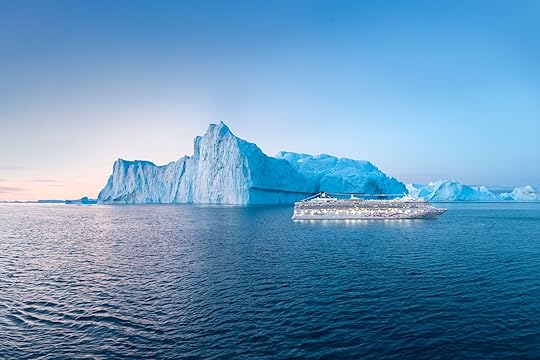
The Norwegian Star in Antarctica. Photo: NCL/Shutterstock
Norwegian Cruise Line (NCL), which only started sailing to Antarctica in 2023, has only one ship making the trip to the seventh continent: the Norwegian Star. NCL sails to Antarctica between six and seven times per year as part of larger voyages in South America.
Guests traveling to Antarctica with NCL do not disembark the ship and can only take in the beauty of the Antarctic region and its wildlife from the comfort of the Norwegian Star as it sails by Paradise Bay and Elephant Island.
Antarctica cruise cost with Norwegian Cruise Line: Starting at $1,750 per person.Can guests go on shore? NoPrincess CruisesPrincess Cruises has been sailing to Antarctica since 2003, and currently offers less than than 10 trips to the continent each year. Princess Cruises’ Sapphire Princess, accommodating up to 2,670 guests, is the only ship of the fleet to sail to Antarctica’s waters.
Because of the large number of passengers on board the Sapphire Princess, guests are not allowed to land in Antarctica and can only see the continent from afar. Sapphire Princess takes more passengers to Antarctica than any other ship on the IAATO list.
However, passengers don’t have to stay on board the entire time, as Princess Cruises’ voyages to Antarctica are combined with other destinations in South America. So guests can go on land and book excursions in countries like Argentina, Chile, Uruguay, Peru, and Brazil.
Antarctica cruise cost with Princess Cruises: Starting at $2,619 per personCan guests go on shore? NoHolland AmericaHolland America began sailing to Antarctica more than 20 years ago, but only a few of the cruise line’s itineraries include the continent. Holland America’s Oosterdam and Volendam are the only ships of the fleet to travel to Antarctica, and they only do so as part of larger South America or Grand Voyage itineraries.
When sailing to Antarctica, Holland America travels through the bays and islands of the Palmer Archipelago off the northern tip of the long Antarctic Peninsula, along the Danco Coast, and through the Antarctic Sound. Because the number of guests on board the ships exceeds 500, landings are not permitted. But there is a naturalist on board to help guests spot and identify wildlife, including penguins and birds, as well as the many whales that live in the waters around Antarctica.
Antarctica cruise cost with Holland America: The 22-Day South America and Antarctica Holiday starts at $2979 per person.Can guests go on shore? NoSwan HellenicSwan Hellenic has been sailing to Antarctica for just four years, with about 20 offerings per season between two vessels: the SH Diana and the SH Vega, both of which are five-star boutique ships holding no more than 200 passengers. Weather permitting, the guides with Swan Hellenic are able to take passengers on Zodiac cruises and kayak tours, allowing for closer wildlife-watching opportunities.
While on board, guests have access to expert lecturers speaking on the history and latest discoveries in astronomy, astrophysics, astrobiology and planetary science, thanks to Swan Hellenic’s SETI Explore Space at Sea Series.
Antarctica cruise cost with Swan Hellenic: Starting at $6,380 per personCan guests go on shore? YesAtlas Ocean Voyages
Photo: Atlas Ocean Voyages
Atlas Ocean Voyages has been sending its its entire fleet of ships to the southernmost part of the world every Antarctic summer, which includes the World Traveller, the World Voyager, and the World Navigator. Collectively, they offer about three dozen sailings per year.
Atlas Ocean Voyages’ ships, which carry fewer than 200 passengers at a time, are purpose-built for Arctic and Antarctic exploration. But they are also meant to provide guests with luxury experiences, with exceptional food and service on board, high-end staterooms, a L’Occitane spa, sauna amenities, and more.
While getting out of the ship is never guaranteed since ice floes, icebergs, and changing sea and weather conditions can make navigation difficult, the Atlas Ocean Voyages captains and expedition teams always aim to take guests on shore landings and Zodiac safaris, allowing for sightseeing and chances to spot unique Antarctic wildlife. The cruise line even organizes a polar plunge when the conditions allow.
All guests on Atlas Ocean Voyages’ Antarctica sailings are gifted with a polar parka and a vest to take home. Atlas Ocean Voyages is an all-inclusive cruise line, so drinks, excursions with the expedition team, and enrichment programs are all included in the price.
Antarctica cruise cost with Atlas Ocean Voyages: Starting at $6,699 per person, plus $450 port charges per person.Can guests go on shore? YesLindblad Expeditions
Read more about Antarctica: 18 Things You Need to Know Before Taking an Antarctic Cruise Education Meets Expedition on This Luxury Cruise to Antarctica This Hotel in Florence Is Inside an Old Museum What It’s Like to Sail to Antarctica on a Cruise Ship’s Maiden Voyage What It’s Like to Sleep on the World’s Coldest Continent Here’s What Life Is Like Aboard the Most Luxurious Ship Cruising Antarctica A Commercial Cruise Line Helped Discover a New Colony of Penguins in Antarctica
Lindblad Expeditions was a pioneer in the field of Antarctica tourism, having sailed to the white continent with citizen (i.e., non-scientist) travelers for the first time in 1966. Now, Lindblad offers eight different Antarctic itineraries of eight, 12, or more than 20 days on four different expedition ships: the National Geographic Explorer, the National Geographic Endurance, the National Geographic Resolution, and the National Geographic Orion.
The National Geographic Endurance and the National Geographic Resolution both launched in 2021. They’re built to safely and comfortably sail in the rough, ice-covered waters of the Antarctic, but also to be as sustainable and fuel efficient as possible. The ships’ designs reduce propulsion power in rough seas, as well as noise and vibrations, which creates less disturbance for wildlife.
While in Antarctica, guests can take guided hikes, paddle on kayak tours through sea ice, and go on cross-country ski excursions. On board, a slew of experts share their knowledge of geology, wildlife biology, climate science, and more with the guests.
On certain itineraries, Lindblad Expeditions offers guests the chance to skip the crossing of Drake Passage by flying one or both ways from King George Island.
Antarctica cruise cost with Lindblad Expeditions: Starting at $8,066 per person.Can guests go on shore? YesSeabourn Cruise LineSeabourn has been taking passengers to Antarctica on ultra-luxury small expedition ships every year since 2013. Two ships from the Seabourn fleet (the Seabourn Venture and the Seabourn Pursuit) make the trip. Both are expedition ships engineered for voyages to difficult-to-reach destinations, though they’re also upscale, with guest comfort and indulgence in mind.
While every outdoor activity in Antarctica is dependent on good weather, all Seabourn sailings to Antarctica intend to land and take guests on various activities, such as Zodiac cruises around icebergs, kayak tours through sea ice, photo classes at penguin colonies, and plenty of hiking options. Seabourn provides all its guests with complimentary Seabourn parkas and backpacks, so they don’t have to bring their own from home.
While on board the ships, Seabourn keeps the Antarctica experience exciting by organizing digital photography workshops, enrichment program, and lectures by special guest speakers.
Antarctica cruise cost with Seabourn: Fare prices vary by itinerary and length. Prices can start from around $9,859.Can guests go on shore? YesHurtigruten Expeditions (HX)
England-based HX (Hurtigruten Expeditions), the world’s largest expedition cruise line, has been sailing to Antarctica since 2002. It’s now the largest operator in Antarctica by number of guests. During the 2024-2025 season, HX will sail 33 times to Antarctica, following eight different itineraries.
Three of HX’s ships sail to the seventh continent: the MS Fridtjof Nansen (a hybrid-powered ship rated the world’s most sustainable cruise ship in 2021), the MS Roald Amundsen (the world’s first hybrid-powered cruise ship), and the MS Fram.
HX offers its guests itineraries filled with outdoors activities, including Zodiac excursions, kayaking, wildlife viewing, and regular landings. Guests can participate in the cruise line’s Citizen Science program via seven different projects, such as penguins and whale research, fisheries management, and more.
Antarctica cruise cost with HX: Antarctica voyages start from $10,120 for the Highlights of Antarctica itinerary.Can guests go on shore? YesAurora Expeditions
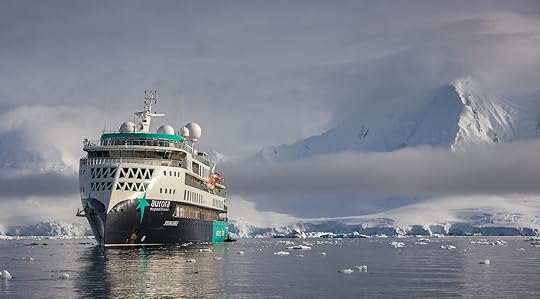
Photo: Richard L’Anson / Aurora Expeditions
Aurora Expeditions is an Australian-owned cruise line that specializes in voyages to polar regions and remote corners of the world. The company sails to Antarctica around 25 to 30 times per year during the Antarctic season, and has been since 1992.
Three of Aurora Expeditions’ ships are purpose-built to sail to Antarctica: the Greg Mortimer, the Sylvia Earle, and, starting in late 2025, Aurora’s newest ship, the Douglas Mawson. There is an average of 132 passengers per ship on Aurora’s ships traveling the Antarctica, and this very low number allows for guests to get out of the ship up to three times per day for activities like Zodiac tours, sea kayaking, ice camping, skiing, and snowshoeing.
Aurora Expeditions is a certified B-corp, meaning it practices the highest levels of sustainability efforts. Travelers can take part in its “Sustainability in Action” or Citizen Science programs, the latter of which focuses on whales, seabirds, microplastics, pollution, weather patterns, phytoplankton, polar fjord lands, and marine biodiversity.
Antarctica cruise cost with Aurora Expeditions: Starting at $10,556 per person (the Spirit of Antarctica itinerary)Can guests go on shore? YesSilversea Cruises
Silversea Cruises began sailing to Antarctica in 2008 and is one of the most luxurious ways to visit the polar region. Each suite on the cruise line’s three Antarctica-bound ships (Silver Cloud, Silver Wind, and Silver Endeavour) has its own butler, whose role is exclusively to cater to guests’ needs. Silversea Cruises organizes around 40 sailings per year to Antarctica, more than any other cruise lines on this list.
But what makes the company stand out is the Fly & Cruise program, which lets guests skip sailing through the dreaded Drake Passage and instead fly business class to Antarctica on a chartered flight. Guests will first fly from Santiago to Punta Arenas to spend the night, then fly from Punta Arenas to King George Island, where the sailing begins. Look for cruises marked with the “Antarctica Bridge” label if that option interests you.
Antarctica cruise cost with Silversea Cruises: Starting at $11,700 per person.Can guests go on shore? YesViking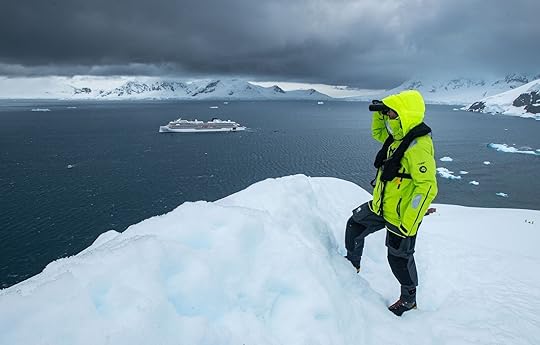
Photo: Viking
Viking started sailing to Antarctica in 2022 and now makes nearly 20 trips to the white continent every year. But only two ships from Viking’s large fleet sail to Antarctica: the Viking Octantis and the Viking Polaris, known collectively as Viking’s expedition fleet. Both luxury ships can accommodate a maximum of 378 guests and are specifically built for safe and comfortable expeditions to remote and ice-covered waters.
Because of the small number of passengers onboard Viking cruises to Antarctica, landing activities are possible. Led by expert guides, guests can go on kayak, and Zodiacs excursions, or even opt for a submarine dive to go more than 400 feet below the surface.
Viking is an all-inclusive cruise lines, so boat excursions, Wi-Fi, access to spa facilities and fitness centers, self-service laundry, 24-hour room service, and specialty dining have no extra charge. Guests on Viking sailings to Antarctica also receive a keepsake Viking expedition jacket as part of their cruise fare.
The Viking Octantis and the Viking Polaris are considered the companies floating research labs, with on-board scientists working on polar research. Fortunately, guests have plenty of options for learning about and even helping with the research.
Antarctica cruise cost with Viking: Starting at $12,995 per person (the Antarctic Explorer itinerary)Can guests go on shore? YesScenic
Photo: Scenic
Scenic cruises makes roughly eight to 10 trips per season in its two purpose-designed ships: Scenic Eclipse I and Scenic Eclipse II, both of which accommodate a maximum of 200 guests.
Beyond the fact that Scenic Eclipse I and Scenic Eclipse II are specifically engineered to navigate ice-covered waters (with features like enhanced stabilizers and reinforced icebreaker hulls), the ships are also extremely luxurious. Guests get what the brand calls a “six-star experience,” thanks to roomier-than-average balcony suites, tailored butler service, a nearly one-to-one crew-to-guest ratio, the immense spa, and the state-of-the-art theater. There are also 10 dining options, plus nine bars and lounges.
When the weather permits, guests can leave the ship for hikes on land, Zodiac cruises, and kayaking or paddleboarding tours. Those who want to see the seventh continent from the air or from underwater have options via the cruise line’s two helicopters or custom submersible.
Antarctica cruise cost with Scenic: Starting at $19,265 per personCan guests go on shore? YesRegent Seven SeasRegent Seven Seas is a fairly recent addition to the list of companies sailing to Antarctica, having only started in 2019 and making just six trips per year. In 2025, two of Regent Seven Seas’ six ships will travel to the seventh continent: the Seven Seas Splendor and Seven Seas Mariner.
Both ships have a guest capacity in the 700s, so neither is permitted to make landfall on the seventh continent. Most of the Regent Seven Seas cruises that go as far as Antarctica are several weeks long, leaving at least three or four days to spend in the water near the continent looking for wildlife and watching icebergs.
Regent Seven Seas Cruises is an all-inclusive and luxury cruise line, including in its price offerings like round-trip business-class flights from US and Canada, free unlimited shore excursions, high-end culinary offerings, valet laundry services, and more.
Antarctica cruise cost with Regent Seven Seas: Starting at $19,999 (the Antarctic Celebration itinerary) 
I Tested Carl Friedrik’s $595 Carry-On Case. Here’s Why It’s Worth the Investment
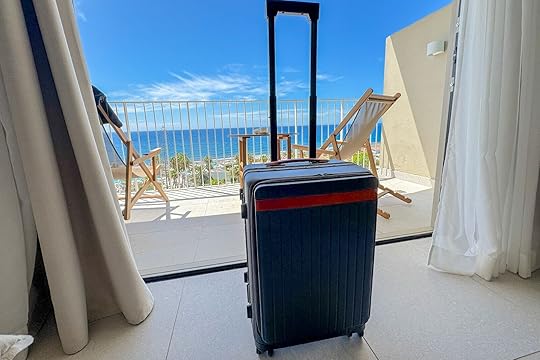
When I initially looked at this travel case and saw the cost, I thought to myself, there’s no way this can be worth the price. At the time of writing, the Carl Friedrik’s Carry-on X retails for $595. To many, this may seem like an awful lot to spend on a carry-on, but I just used it as my only piece of luggage for a four-day trip, and I was blown away by the quality.
We hope you love the Carl Friedrik’s Carry-on X! Just so you know, Matador may collect a small commission from the links on this page if you decide to make a purchase. Listed prices are accurate as of the time of publication.
Does the quality of the Carry-on X match the price tag?
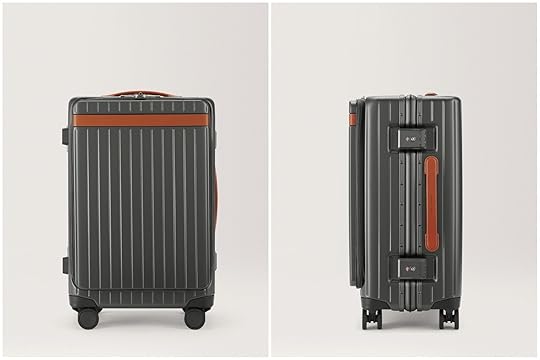
Photo: Carl Friedrik
Out of the box, the Carry-on X arrived in a lovely fabric sleeve, and upon removal, I could tell immediately that this was a high-grade piece of equipment. The Vachetta leather detailing really sets off the premium look, and everything about it exudes quality. Opening the case reveals two generous compartments with adjustable straps, a removable compression pad, and more leather detailing.
The Carry-on X has an exceptional build
I was very impressed with many aspects of this case. Built to a high specification, it’s constructed from an aluminum frame with a polycarbonate outer shell, making it lightweight but highly durable.
Internally, the stitching is on point, with straight lines, no loose threads, and quality zips that I don’t anticipate having any problems with.

Photo: James Gavin
The locking mechanism feels well put together. So many other combination locks I have experienced become a pain to use, the numbers not quite sitting correctly, forcing a frustrating amount of fiddling with the lock before it opens, but not so here. The dials sit nicely in place as they should, and the lock opens and closes rather satisfyingly. It’s also reassuring to have the TSA locks, knowing your case won’t be damaged should any security inspections be required at the airport.
On the subject of the airport, traveling through it is a breeze with the 360-degree Hinomoto silent spinner wheels. I can’t overstate how much of a difference these wheels make to the experience of traveling with this case. It glides seamlessly across whichever surface, no rattling, no wobbles — a night and day difference from cases I have used before.
The interior is so well organized you won’t need an iron at your destination
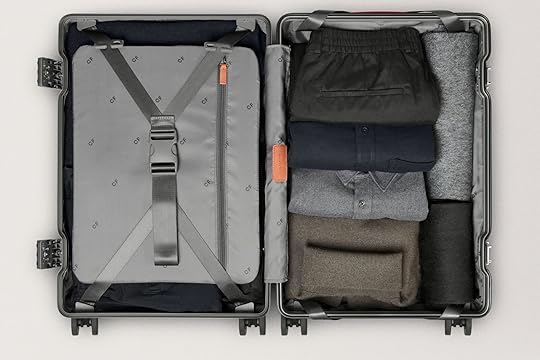
Photo: Carl Friedrik
The inside of your case has to be well laid out for all of your gear, and the interior of the Carry-on X has everything you could want and more.
Each side of the case has integrated straps to hold your things in place, and there is also a removable compression pad that works in tandem with the straps to compress one side. I absolutely loved this feature. So many times, I have folded and sorted clothes neatly, only to arrive at the destination and open my case to a kit explosion. Not so this time. Everything was exactly where it should be. In fact, if ironed and folded correctly, clothes should arrive uncreased at the destination using this carriage system.
There are also some little zip pockets in the inner lining, and on the removable compression pad, just to give some extra separated storage space.
Laptops can be stored in the integrated front pocket
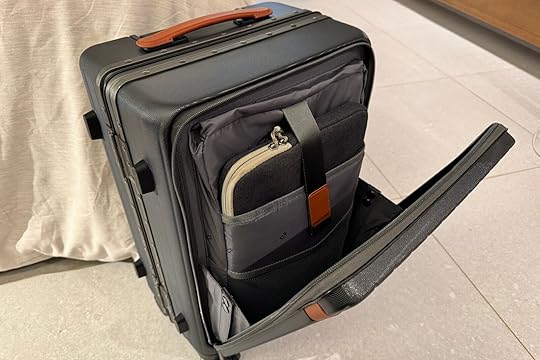
Photo: James Gavin
One of the standout features of this model is the integrated front pocket, which gives easy access to your electronic devices and travel documents.
The front pocket zips open easily to access the interior and is kept in a half-open position by a fabric hinge that can be easily unbuttoned to allow full extension of the front section.
I really rate this design. Access is simple, and the hard-covered pocket accommodates a 16-inch MacBook Pro. Most importantly, the polycarbonate shell protects your laptop and anything else from the harsh environment of aircraft overhead bins or overzealous luggage handlers should you need to check it in.
I had zero worries when traveling with my valuables. Not being concerned about damaging expensive equipment makes traveling a little more relaxing.
Is the Carry-on X worth $595?
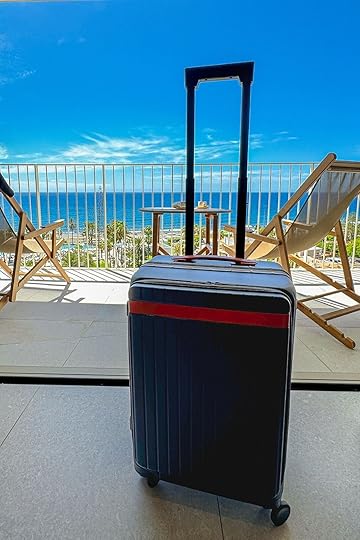
Photo: James Gavin
Given the price point of this case, I was expecting quality, and frankly, the Carry-on X has it in spades. It looks and feels premium. It does everything you need it to do and does so while looking good. Not only will your stuff get to the destination in its originally packed state, but the case made me feel less stressed about my travel experience.
The more I considered its value, the more it made sense to me. I have almost certainly spent over and above the cost of this carry-on on previous cases, which have long since been retired due to assorted rips, tears, broken zips, or the wheels, quite literally, falling off. And with the lifetime warranty included with the Carry-on X, why keep buying new cases when you can just invest once?
Carl Friedrik’s Carry-on X specifications
Hard-shell zipped front laptop pocketRobust telescopic handleIntegrated TSA-approved locksSeamless 360-degree Hinomoto silent spinner wheelsInterior includes two sets of compression straps and a compression padTwo narrow zipped interior pocketsCompliant with most European, US, and countries airline cabin size restrictionsWidth: 38 cm (15 inches)Height: 55 cm (21.7 inches)Depth: 25 cm (9.6 inches) 27 cm (10.6 inches) when expandedWeight: 4.3 kg (9.5 lbs)Volume: 43 L
 Buy NowMore like thisTravelI Found the Perfect Men's Travel Shorts for a Town-to-Trail Lifestyle
Buy NowMore like thisTravelI Found the Perfect Men's Travel Shorts for a Town-to-Trail Lifestyle
The 19 Best Jamaica Airbnbs With Pools, Beach Access, and Luxurious Amenities

Jamaica is filled with stunning beaches, lush jungles, and a vibrant culture filled with music and great food. It’s no wonder that Jamaica is one of the most popular Caribbean destinations for travelers, and the right Jamaica Airbnbs will put you right next to it all.
The grande dame of Jamaica is Montego Bay, which has four of the poshest resorts in the Caribbean, while Ocho Rios is the island’s major port of call for cruise ships. If you’re looking for more of a bustling city atmosphere, Kingston is where you should go.
Airbnb rentals in Jamaica offer more than just a place to stay; they provide an opportunity to immerse yourself in the culture and beauty of the island. With access to local restaurants, shops, and attractions, you can explore the best of what Jamaica has to offer without ever leaving your rental. Plus, many Airbnbs come with amenities like private chefs or beach shuttles that make your stay even more enjoyable.
No matter where you choose to stay in Jamaica, there are plenty of activities to enjoy such as hiking through Blue Mountains National Park or taking a dip in Martha Brae River. Whether you’re looking for a relaxing beach vacation or an adventure-filled getaway, Jamaica has something for everyone.
We hope you love the spaces we recommend! Just so you know, Matador may collect a small commission from the links on this page if you decide to book a stay. Listed prices are accurate as of the time of publication.
Airbnbs in Kingston, Jamaica
Central penthouse with rooftop pool
 Photo: Airbnb
Photo: Airbnb Photo: Airbnb
Photo: Airbnb Photo: Airbnb
Photo: Airbnb Photo: Airbnb
Photo: AirbnbSee more photos
Experience the pulsating capital at this luxury duplex. Straddling the seventh and eighth floors with two balconies, the condo has cracking views and tons of natural light. The open-plan kitchen is stocked for light to moderate cooking and you’ll have your pick of Kingston’s best restaurants thanks to the location near Hope Road. Cool off from a day of sightseeing in the rooftop pool and enjoy the mountain scenery.
Eight guests, three bedrooms
Price: $256 per night
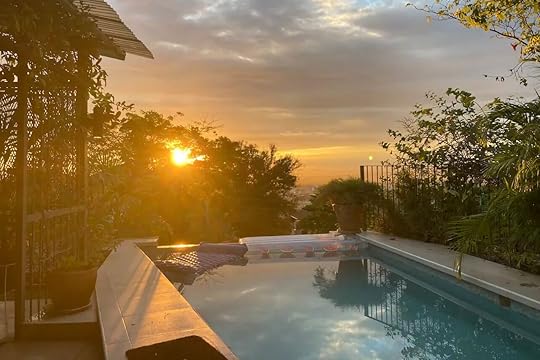 Photo: Airbnb
Photo: Airbnb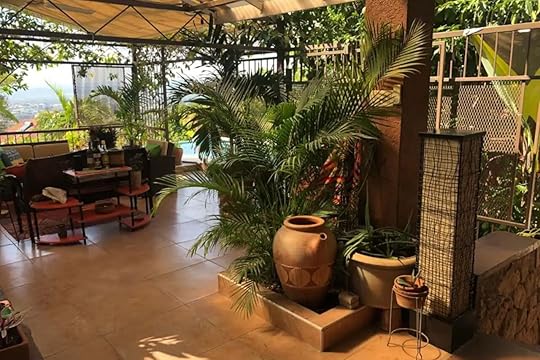 Photo: Airbnb
Photo: Airbnb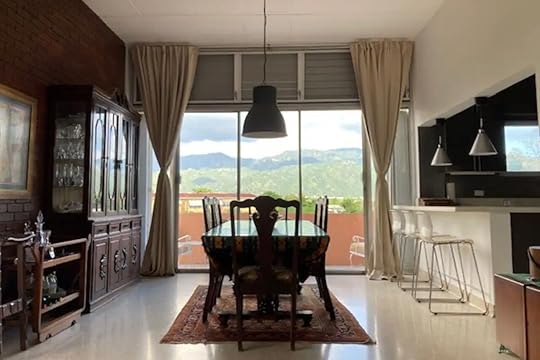 Photo: Airbnb
Photo: Airbnb Photo: Airbnb
Photo: AirbnbSee more photos
Situated in the upscale Beverly Hills neighborhood, this dreamy Kingston Airbnb is as convenient for the Bob Marley Museum as for getting out to the Blue Mountains. It’s roomy enough for small groups and families to spread out indoors and out on the leafy patio where the pool supplies epic views over the city. As a much-loved family home, the suite is thoughtfully decorated and furnished. There’s free, secure parking, and car rental is highly recommended in this hilly spot.
Six guests, three bedrooms
Price: $204 per night
 Photo: Airbnb
Photo: Airbnb Photo: Airbnb
Photo: Airbnb Photo: Airbnb
Photo: Airbnb Photo: Airbnb
Photo: AirbnbSee more photos
This solar-powered Airbnb is located in Jamaica’s Blue Mountains and comes with a private swimming hole and waterfall. The cabin peeps out of a bamboo grove with wall-to-wall windows and balconies overlooking a sea of green as far as the eye can see. All you’ll hear is the burble of the river and birdsong. Seeing as it’s so remote, guests are encouraged to tap on the catering service.
Four guests, two bedrooms
Price: $162 per night
 Photo: Airbnb
Photo: Airbnb Photo: Airbnb
Photo: Airbnb
 Photo: Airbnb
Photo: AirbnbSee more photosThe airbnb known as City Nirvana is a safe urban retreat located next to City Cabin in the vibrant Liguanea area. Enjoy amazing mountain views, stroll through our verdant garden, listen to birds during the day and creatures at night — all with easy access to explore the Bob Marley Museum, Devon House, restaurants, coffee shops, stores, and supermarkets. There’s a living room perfect for relaxing or watching TV and a sofa bed that can sleep an additional two guests (additional cost applies). The full size bathroom offers an invigorating outdoor shower with a conch shell showerhead surrounded by palm and heliconia plants. Upstairs, there’s a queen-size bed for when you’re ready to drift off next to local artist impressions of our garden blooms and foliage. Step out onto your private patio for some fresh air or work remotely in anticipation of mangoes galore during mango season.
Two guests, one bedroom
Price: $118 per night
 Photo: Airbnb
Photo: Airbnb Photo: Airbnb
Photo: Airbnb Photo: AirbnbSee more photos
Photo: AirbnbSee more photosEnjoy the best of both worlds at Akwaaba Penthouse Luxury Suite, a modern apartment perched on a slope in central Kingston. With an incredible view of the Blue Mountain and city skyline, you’ll have plenty of opportunities to relax and take in the view — especially after dark when the city lights up. This spacious suite offers a king size master bedroom with bathroom for extra comfort. As it’s centrally located close to shopping areas, museums and National Stadium (just 20 minutes drive from Norma Manley airport), there’s no shortage of places to explore either.
Two guests, one bedroom
Price: $150 per night
 Photo: Airbnb
Photo: Airbnb Photo: Airbnb
Photo: Airbnb Photo: AirbnbSee more photosParadise Haven at Genesis 28 is tastefully designed with a modern and contemporary touch, offering you panoramic views of the city as well as many amenities such as an infinity pool, gym, fast Wi-Fi, smart TVs and on-site parking. The complex is also secured by 24-hour surveillance cameras and a security post for your peace of mind. You can enjoy the two bedrooms and 2.5 bathrooms that have all the comforts of home — king size beds, cable TV, air conditioning and more — plus a designated work area for longer stays. Relax in the rooftop infinity pool or sauna, or watch movies in the theater while enjoying the spectacular views.
Photo: AirbnbSee more photosParadise Haven at Genesis 28 is tastefully designed with a modern and contemporary touch, offering you panoramic views of the city as well as many amenities such as an infinity pool, gym, fast Wi-Fi, smart TVs and on-site parking. The complex is also secured by 24-hour surveillance cameras and a security post for your peace of mind. You can enjoy the two bedrooms and 2.5 bathrooms that have all the comforts of home — king size beds, cable TV, air conditioning and more — plus a designated work area for longer stays. Relax in the rooftop infinity pool or sauna, or watch movies in the theater while enjoying the spectacular views.
Six guests, two bedrooms
Price: $250 per night
 Photo: Airbnb
Photo: Airbnb Photo: Airbnb
Photo: Airbnb Photo: Airbnb
Photo: Airbnb Photo: Airbnb
Photo: AirbnbSee more photos
Stop the search: this all-inclusive Airbnb in Jamaica is the paradise you’re searching for. Your reservation includes one complimentary airport transfer plus an attentive butler, chef, and housekeeper throughout. The villa is part of a gated community with a private beach and free kayaks. The first-floor lounge spills over into a covered dining patio with pool and sea views. Retreat to the book nook or the spa-like tub shrouded by tropical fronds for “me time”.
Eight guests, four bedrooms
Price: $1,350 per night
 Photo: Airbnb
Photo: Airbnb Photo: Airbnb
Photo: Airbnb Photo: Airbnb
Photo: Airbnb Photo: AirbnbSee more photosThis two-story cottage in Montego Bay sits in a private patch of land on the grounds of a family home. The pool has panoramic sea views and both bedrooms open onto a corner balcony with an even better perspective. All spaces burst with color and are turned out with hotel-standard amenities while the kitchen contains everything you need to cook. Sangster International Airport is a five-minute drive: message the host about a driver.
Photo: AirbnbSee more photosThis two-story cottage in Montego Bay sits in a private patch of land on the grounds of a family home. The pool has panoramic sea views and both bedrooms open onto a corner balcony with an even better perspective. All spaces burst with color and are turned out with hotel-standard amenities while the kitchen contains everything you need to cook. Sangster International Airport is a five-minute drive: message the host about a driver.
Four guests, two bedrooms
Price: $269 per night
 Photo: Airbnb
Photo: Airbnb Photo: Airbnb
Photo: Airbnb Photo: Airbnb
Photo: Airbnb Photo: AirbnbSee more photosThis two-bedroom waterfront apartment overlooks the Caribbean Sea. The condo is superbly located and everything is virtually on your doorstep, only 20 minutes away from the Sangster International Airport. You will feel right at home, and our services come complete with a large fully equipped kitchen, filter coffee machine, cable TV, Wi-Fi, washer and dryer, AC in all bedrooms, ceiling fans, and an abundance of natural light. There’s also a pool, kids pool, kids play area and manicured gardens as well as barbecue and bar for shared use of all residents. You can access neighboring Montego Bay Yacht Club and Marina Palms Restaurant for some fine dining.
Photo: AirbnbSee more photosThis two-bedroom waterfront apartment overlooks the Caribbean Sea. The condo is superbly located and everything is virtually on your doorstep, only 20 minutes away from the Sangster International Airport. You will feel right at home, and our services come complete with a large fully equipped kitchen, filter coffee machine, cable TV, Wi-Fi, washer and dryer, AC in all bedrooms, ceiling fans, and an abundance of natural light. There’s also a pool, kids pool, kids play area and manicured gardens as well as barbecue and bar for shared use of all residents. You can access neighboring Montego Bay Yacht Club and Marina Palms Restaurant for some fine dining.
Four guests, two bedrooms
Price: $295 per night
 Photo: Airbnb
Photo: Airbnb Photo: Airbnb
Photo: Airbnb Photo: AirbnbSee more photosThis family cottage is situated on the grounds of Victory, presenting you with a unique opportunity to experience Jamaican home living. With a spectacular view of the Sangster International Airport and Caribbean Sea, as well as only being five minutes away from world-famous Doctors Cave Beach, not to mention five minutes drive from the airport, you won’t want for much more during your stay. The owners also own the SeaGull at Little Bay Country Club in Negril, so you know there’s attention to detail. Inside the cottage there is a Bose music system to provide entertainment and relaxation alongside with other services offered upon request.
Photo: AirbnbSee more photosThis family cottage is situated on the grounds of Victory, presenting you with a unique opportunity to experience Jamaican home living. With a spectacular view of the Sangster International Airport and Caribbean Sea, as well as only being five minutes away from world-famous Doctors Cave Beach, not to mention five minutes drive from the airport, you won’t want for much more during your stay. The owners also own the SeaGull at Little Bay Country Club in Negril, so you know there’s attention to detail. Inside the cottage there is a Bose music system to provide entertainment and relaxation alongside with other services offered upon request.
Four guests, two bedrooms
Price: $269 per night
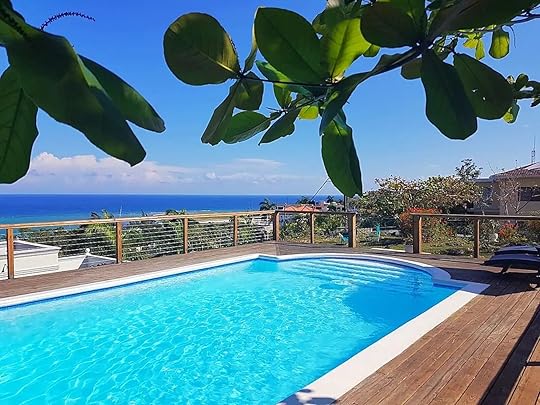 Photo: Airbnb
Photo: Airbnb Photo: Airbnb
Photo: Airbnb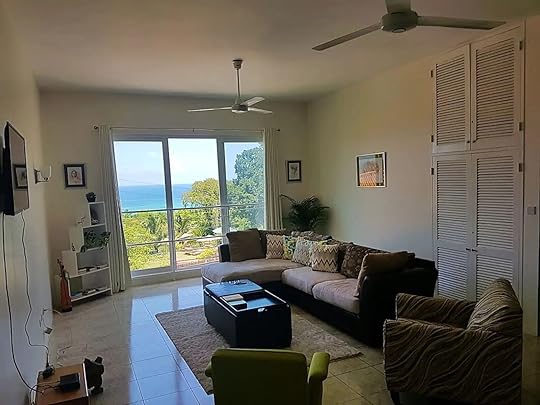 Photo: AirbnbSee more photosWake up and pull away your curtains to a breathtaking view of the Caribbean Sea while you relax and unwind in a spacious and modern home away from home. The apartment is palatial, cool, and conveniently located near both the airport (just five minutes by car) and the Hip Strip (20 minutes on foot or five minutes by car). Enjoy the roof top pool with an incredible ocean view, or watch as planes land at the airport. It’s fully equipped with shatterproof windows, air conditioning throughout, free Wi-Fi and cable TV, two cozy en-suite bedrooms with queen size beds (additional bed available upon request for larger groups), microwave, stove, toaster, kettle, cooking supplies, linens, bath and beach towels. There’s also a security guard onsite between 5 PM to 11 PM for added peace of mind. Airport pickup is available for an additional cost based on availability.
Photo: AirbnbSee more photosWake up and pull away your curtains to a breathtaking view of the Caribbean Sea while you relax and unwind in a spacious and modern home away from home. The apartment is palatial, cool, and conveniently located near both the airport (just five minutes by car) and the Hip Strip (20 minutes on foot or five minutes by car). Enjoy the roof top pool with an incredible ocean view, or watch as planes land at the airport. It’s fully equipped with shatterproof windows, air conditioning throughout, free Wi-Fi and cable TV, two cozy en-suite bedrooms with queen size beds (additional bed available upon request for larger groups), microwave, stove, toaster, kettle, cooking supplies, linens, bath and beach towels. There’s also a security guard onsite between 5 PM to 11 PM for added peace of mind. Airport pickup is available for an additional cost based on availability.
Six guests, two bedrooms
Price: $130 per night
 Photo: Airbnb
Photo: Airbnb Photo: Airbnb
Photo: Airbnb Photo: Airbnb
Photo: Airbnb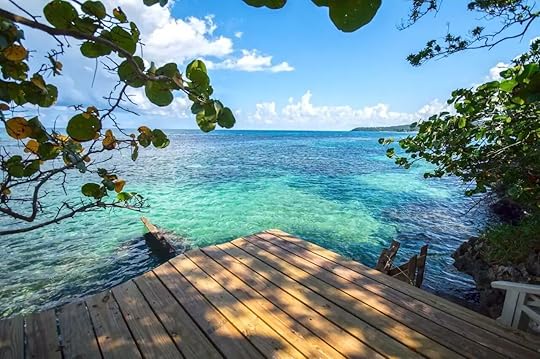 Photo: Airbnb
Photo: AirbnbSee more photos
Start every day of your Caribbean vacation with a dip in the ocean while your coffee brews. This cottage is surrounded by avocado and mango trees with a hammock and picnic table for your exclusive use. There’s a supply of kayaks and a yoga deck shared with the host couple who are on hand to provide local tips. The home is adorned with Jamaican art and you have the option to hire a chef.
Two guests, one bedroom
Price: $150 per night
 Photo: Airbnb
Photo: Airbnb Photo: Airbnb
Photo: Airbnb Photo: Airbnb
Photo: Airbnb Photo: AirbnbSee more photos
Photo: AirbnbSee more photosLive that million-dollar lifestyle at this Luxe Airbnb in Ocho Rios. The seven-bedroom villa has been carefully upgraded with a modern kitchen and a gym. All bedrooms are individually styled and come with an indulgent en suite bathroom. External space at Canoe Cove includes a gigantic pool, hot tub, kids’ sandbox, and putting green. In between excursions, you can perfect your serve on the private tennis court.
Fourteen guests, seven bedrooms
Price: $5,000 per night
 Photo: Airbnb
Photo: Airbnb Photo: Airbnb
Photo: Airbnb Photo: AirbnbSee more photosThis luxury two bedroom, two bathroom oceanfront penthouse condo is in an upscale gated community with 24-hour security. Relax by one of two swimming pools, a tennis court, and gym, or take in the view of the Caribbean Sea from the living room or master bedroom. The unit comes with a full kitchen, air conditioning, flat screen TVs, Wi-Fi, and more. Guests have access to all community amenities, including chef services, meals, and housekeeping (for a fee). There are all-inclusive packages with up to two meals per day as well as daily housekeeping.
Photo: AirbnbSee more photosThis luxury two bedroom, two bathroom oceanfront penthouse condo is in an upscale gated community with 24-hour security. Relax by one of two swimming pools, a tennis court, and gym, or take in the view of the Caribbean Sea from the living room or master bedroom. The unit comes with a full kitchen, air conditioning, flat screen TVs, Wi-Fi, and more. Guests have access to all community amenities, including chef services, meals, and housekeeping (for a fee). There are all-inclusive packages with up to two meals per day as well as daily housekeeping.
Four guests, two bedrooms
Price: $199 per night
 Photo: Airbnb
Photo: Airbnb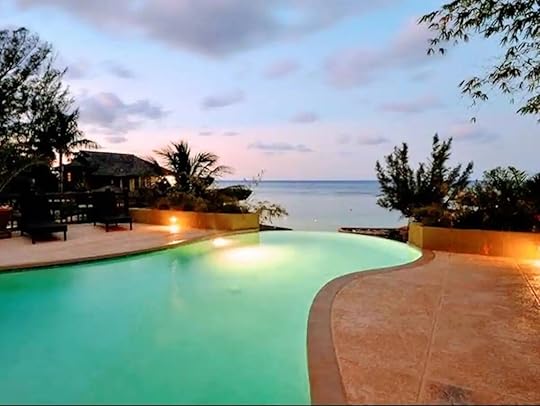 Photo: Airbnb
Photo: Airbnb Photo: AirbnbSee more photosParadise Penthouse is located in the peaceful, upscale gated community of Ocho Rios. This 3,100-square-foot oceanfront space has been freshly renovated with stainless steel appliances, modern furniture, and pillow top mattresses throughout. Accommodate up to eight people with three bedrooms and four bathrooms. Enjoy private balconies with views of the tropical gardens and ocean from all three rooms. Easily access fine dining, shopping, banking, eateries and additional beaches in less than five minutes or discover some of Jamaica’s top attractions within 10 minutes such as Dunn’s River Falls and Mystic Mountain. Guests also get to enjoy amenities such as air conditioning in every room, flat screen TVs in all rooms, free Wi-Fi, Netflix, mini bar inside the condo, infinity pool, barbecue facilities, children’s swing set with play area, and more.
Photo: AirbnbSee more photosParadise Penthouse is located in the peaceful, upscale gated community of Ocho Rios. This 3,100-square-foot oceanfront space has been freshly renovated with stainless steel appliances, modern furniture, and pillow top mattresses throughout. Accommodate up to eight people with three bedrooms and four bathrooms. Enjoy private balconies with views of the tropical gardens and ocean from all three rooms. Easily access fine dining, shopping, banking, eateries and additional beaches in less than five minutes or discover some of Jamaica’s top attractions within 10 minutes such as Dunn’s River Falls and Mystic Mountain. Guests also get to enjoy amenities such as air conditioning in every room, flat screen TVs in all rooms, free Wi-Fi, Netflix, mini bar inside the condo, infinity pool, barbecue facilities, children’s swing set with play area, and more.
Six guests, three bedrooms
Price: $385 per night
 Photo: Airbnb
Photo: Airbnb Photo: AirbnbSee more photosThis two bedroom penthouse in the heart of Ocho Rios offers magnificent views of the beach and mountains. It has a private patio with an outdoor shower, a fully equipped kitchenette, three TVs with cable, computer and wireless internet, plus a VOIP telephone to call worldwide (for a fee). Costco-sized beach towels are also provided. There is an on-demand water heater and newly installed glass windows with bug screens. Guests must walk up two flights of steps to access the property, and transportation to and from the airport can be arranged for an additional fee.
Photo: AirbnbSee more photosThis two bedroom penthouse in the heart of Ocho Rios offers magnificent views of the beach and mountains. It has a private patio with an outdoor shower, a fully equipped kitchenette, three TVs with cable, computer and wireless internet, plus a VOIP telephone to call worldwide (for a fee). Costco-sized beach towels are also provided. There is an on-demand water heater and newly installed glass windows with bug screens. Guests must walk up two flights of steps to access the property, and transportation to and from the airport can be arranged for an additional fee.
Six guests, two bedrooms
Price: $169 per night
 Photo: Airbnb
Photo: Airbnb Photo: Airbnb
Photo: Airbnb Photo: Airbnb
Photo: Airbnb Photo: AirbnbSee more photos
Photo: AirbnbSee more photosEscape to Jamaica’s southern coast for uncrowded beaches and hidden coves. This chic villa in Treasure Beach has a private infinity pool watching over the sea. It’s lovely for a couple or small family seeking quiet luxury in a quieter part of the island. A home-cooked breakfast and dinner are included and the host can assist with airport transport, tours, and home massage bookings. They can also connect you with a driver to show you the nearby beauty spots.
Four guests, two bedrooms
Price: $300 per night
 Photo: Airbnb
Photo: Airbnb Photo: Airbnb
Photo: Airbnb Photo: Airbnb
Photo: Airbnb Photo: AirbnbSee more photos
Photo: AirbnbSee more photosBask under the Caribbean sun at this charming Airbnb for couples on Jamaica’s rustic south coast. The pool has an uninterrupted view of the sea and those out-of-this-world sunsets. Interiors are homely with woven fabrics and local art adding color and warmth. A private chef is available upon request otherwise you can elect for grocery stocking and prepare your own meals in the fully-equipped kitchen.
Two guests, one bedroom
Price: $275 per night
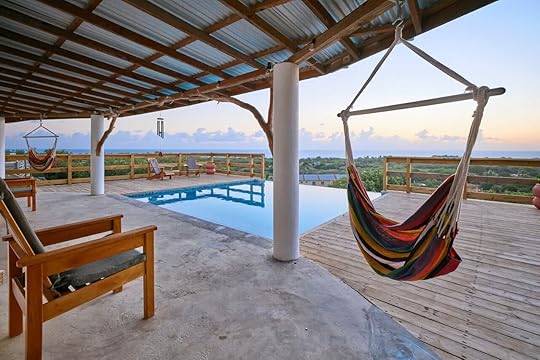 Photo: Airbnb
Photo: Airbnb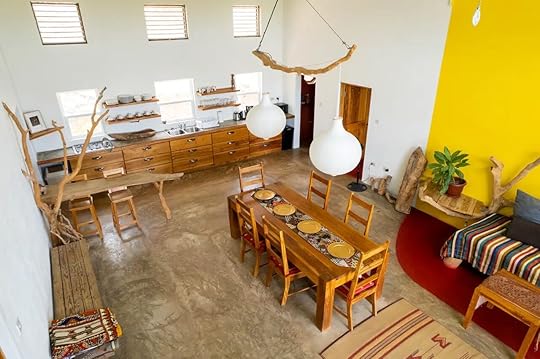 Photo: Airbnb
Photo: Airbnb Photo: Airbnb
Photo: Airbnb Photo: AirbnbSee more photosThis outstanding two-bedroom villa is installed on a bluff covered in lignum vitae trees only a 10-minute walk from the Caribbean Sea. Take in the landscapes from the infinity pool and savor guilt-free siestas in the hammocks. Custom beds, handcrafted trinkets, and plants add a bohemian feel to the living spaces. Chat with the host about at-home yoga sessions and massages, chef services, and boat tours.
Photo: AirbnbSee more photosThis outstanding two-bedroom villa is installed on a bluff covered in lignum vitae trees only a 10-minute walk from the Caribbean Sea. Take in the landscapes from the infinity pool and savor guilt-free siestas in the hammocks. Custom beds, handcrafted trinkets, and plants add a bohemian feel to the living spaces. Chat with the host about at-home yoga sessions and massages, chef services, and boat tours. 
Five guests, two bedrooms
Price: $396 per night
Matador Network's Blog
- Matador Network's profile
- 6 followers



